Lagrangea, provisional designation 1923 OU, is a carbonaceous background asteroid from the outer region of the asteroid belt, approximately 30 kilometers in diameter. It was discovered on 12 September 1923, by Russian astronomer Sergey Belyavsky at the Simeiz Observatory on the Crimean peninsula. The asteroid was named after Italian mathematician and astronomer Joseph-Louis Lagrange.

1010 Marlene is a carbonaceous background asteroid from the outer regions of the asteroid belt, approximately 47 kilometers in diameter. It was discovered on 12 November 1923, by astronomer Karl Reinmuth at the Heidelberg-Königstuhl State Observatory in southwest Germany. The asteroid was named after German actress and singer Marlene Dietrich.
3204 Lindgren, provisional designation 1978 RH, is a carbonaceous background asteroid from the outer regions of the asteroid belt, approximately 20 kilometers in diameter. It was discovered on 1 September 1978, by Soviet astronomer Nikolai Chernykh at the Crimean Astrophysical Observatory in Nauchnij, on the Crimean peninsula. The B-type asteroid has a rotation period of 5.6 hours. It was named after Swedish writer Astrid Lindgren.
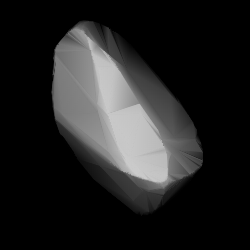
1119 Euboea is a background asteroid from the central region of the asteroid belt. It was discovered on 27 October 1927, by German astronomer Karl Reinmuth at the Heidelberg-Königstuhl State Observatory in southwest Germany. The asteroid has a rotation period of 11.4 hours and measures approximately 30 kilometers in diameter. It was named for the Greek island of Euboea.
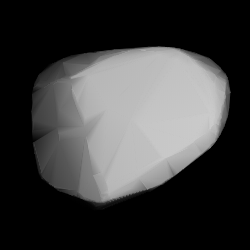
1125 China (prov. designation: 1957 UN1) is a dark background asteroid from the outer regions of the asteroid belt. It was discovered on 30 October 1957, by astronomer Zhāng Yùzhé (Y. C. Chang, 张钰哲) at the Chinese Purple Mountain Observatory (紫金山天文台) in Nanjing, and named in honor of the country China. The assumed C-type asteroid has a short rotation period of 5.4 hours and measures approximately 26 kilometers (16 miles) in diameter. Its name and number were actually taken from another asteroid that was considered a lost asteroid at the time, but was eventually rediscovered and given the new designation 3789 Zhongguo. "Zhongguo" means "China" in Chinese (1928 UF).
1154 Astronomia, provisional designation 1927 CB, is a carbonaceous background asteroid from the outer regions of the asteroid belt, approximately 60 kilometers in diameter. It was discovered by German astronomer Karl Reinmuth at the Heidelberg-Königstuhl State Observatory on 8 February 1927. The asteroid was named for the natural science of astronomy.
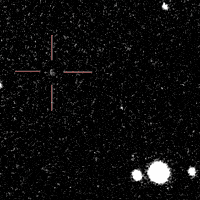
7167 Laupheim, provisional designation 1985 TD3, is a dark background asteroid from the outer regions of the asteroid belt, approximately 20 kilometers (12 miles) in diameter. It was discovered on 12 October 1985, by American astronomers Carolyn and Eugene Shoemaker at the Palomar Observatory in California. The presumed C-type asteroid has a rotation period of 7.04 hours and was named for Robert Clausen and his team at the public Laupheim Observatory in Germany.

9936 Al-Biruni, provisional designation 1986 PN4, is a carbonaceous asteroid from the outer region of the asteroid belt, approximately 24 kilometers in diameter. It was discovered on 8 August 1986, by Belgian and Bulgarian astronomers Eric Elst and Violeta Ivanova at the Rozhen Observatory, located in Bulgaria's Smolyan province near the border to Greece. It was named for Persian medieval scholar Al-Biruni.
1213 Algeria, provisional designation 1931 XD, is a carbonaceous asteroid from the outer region of the asteroid belt, approximately 32 kilometers in diameter. Discovered by Guy Reiss at Algiers Observatory in 1931, it was named after the North African country of Algeria.

1294 Antwerpia (prov. designation: 1933 UB1) is a dark background asteroid from the central regions of the asteroid belt. It was discovered on 24 October 1933, by astronomer Eugène Delporte at the Royal Observatory of Belgium in Uccle. The carbonaceous C-type asteroid has a rotation period of 6.6 hours and measures approximately 35 kilometers (22 miles) in diameter. It was named for the Belgian city of Antwerp.

1349 Bechuana, provisional designation 1934 LJ, is a background asteroid from the outer regions of the asteroid belt, approximately 26 kilometers in diameter. It was discovered on 13 June 1934, by South-African astronomer Cyril Jackson at the Union Observatory in Johannesburg. The asteroid was named for the former Bechuanaland, what is now the Republic of Botswana.
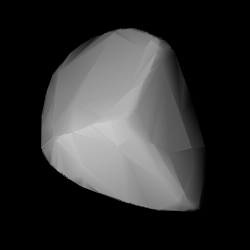
1555 Dejan, provisional designation 1941 SA, is an asteroid from the background population of the central regions of the asteroid belt, approximately 22 kilometers in diameter. It was discovered on 15 September 1941, by Belgian astronomer Fernand Rigaux at the Royal Observatory of Belgium in Uccle. The asteroid was named after Dejan Đurković, son of Serbian astronomer Petar Đurković.

1672 Gezelle, provisional designation 1935 BD, is a carbonaceous asteroid from the outer region of the asteroid belt, approximately 27 kilometers in diameter. It was discovered on 29 January 1935, by Belgian astronomer Eugène Delporte at Royal Observatory of Belgium in Uccle, Belgium. It was later named after Flemish poet and Roman Catholic priest Guido Gezelle.
4997 Ksana, provisional designation 1986 TM, is a carbonaceous Palladian asteroid from the outer region of the asteroid belt, approximately 10 kilometers in diameter. It was discovered on 6 October 1986, by Russian astronomer Lyudmila Karachkina at Crimean Astrophysical Observatory on the Crimean peninsula. The asteroid was named for Russian chemist Kseniya Nessler.

1332 Marconia, provisional designation 1934 AA, is a dark asteroid and the parent body of the Marconia family located in the outer regions of the asteroid belt. It measures approximately 46 kilometers in diameter. The asteroid was discovered on 9 January 1934, by Italian astronomer Luigi Volta at the Observatory of Turin in Pino Torinese, northern Italy. It was named for Italian electrical engineer Guglielmo Marconi. The uncommon L-type asteroid has a rotation period of 19.2 hours.

1841 Masaryk (prov. designation: 1971 UO1) is a carbonaceous background asteroid from the outer region of the asteroid belt, approximately 46 kilometers in diameter. It was discovered on 26 October 1971, by Czech astronomer Luboš Kohoutek at Bergedorf Observatory in Hamburg, Germany. The asteroid was named after the first President of Czechoslovakia, Tomáš Garrigue Masaryk.
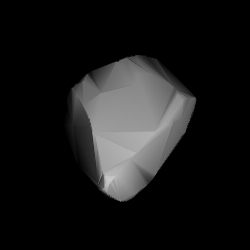
3428 Roberts is a background asteroid from the central regions of the asteroid belt, approximately 17 kilometers in diameter. It was discovered on 1 May 1952, by Indiana University's Indiana Asteroid Program at its Goethe Link Observatory near Brooklyn, Indiana, United States. The asteroid has a short rotation period of 3.28 hours. It was named in memory of American astronomer Walter Orr Roberts.
1734 Zhongolovich, provisional designation 1928 TJ, is a carbonaceous Dorian asteroid from the central region of the asteroid belt, approximately 28 kilometers in diameter.

1546 Izsák, provisional designation 1941 SG1, is a background asteroid from the outer regions of the asteroid belt, approximately 27 kilometers in diameter. It was discovered on 28 September 1941, by Hungarian astronomer György Kulin at the Konkoly Observatory near Budapest, Hungary. The asteroid was named after Hungarian astronomer Imre Izsák.

7517 Alisondoane is a dark background asteroid from the inner regions of the asteroid belt. It was discovered on 3 January 1989, by Japanese amateur astronomer Takuo Kojima at the YGCO Chiyoda Station in the northern Kantō region of Japan. The carbonaceous C-type asteroid has a rotation period of 9.7 hours and measures approximately 9 kilometers in diameter. It was named after Alison Doane (1958–2017), curator of astronomical photographs at the Harvard College Observatory.














